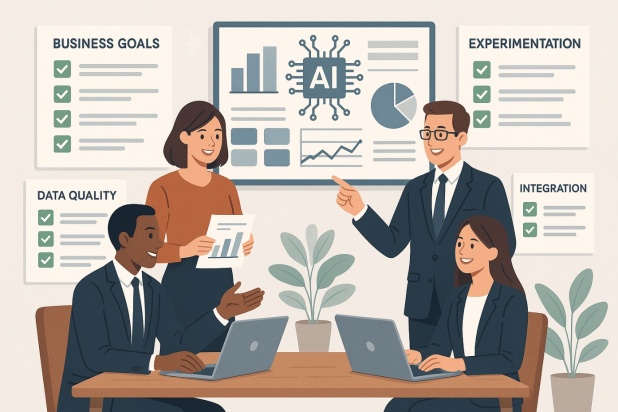
In 2025, the marketing space has evolved dramatically. Gone are the days of relying solely on intuition and past data. Today, predictive marketing with GenAI stands at the forefront combining the foresight of predictive analytics with the creativity of generative AI. This fusion enables brands to anticipate consumer behaviour, personalise campaigns and optimise marketing spend with unprecedented precision.
Understanding Predictive Marketing With GenAI
Predictive marketing with GenAI merges two powerful technologies:
a) Predictive analytics: Analyses historical and real-time data to forecast future consumer behaviours.
b) Generative AI: Creates tailored content and strategies based on these predictions.
Together they empower marketers to craft hyper-personalised campaigns that resonates deeply with the target audience. For instance, instead of generic advertisements brands can identify specific segments like “urban millennials seeking sustainable products” and tailor messages accordingly. This approach not only enhances engagement but also boosts return on investment (ROI).
Anticipating Consumer Trends Before They Emerge
Traditional trend analysis often reacts to changes after they’ve occurred. In contrast, consumer trend forecasting with GenAI proactively identifies emerging patterns by analysing vast datasets from social media, purchase histories and other digital touchpoints.
A notable example is Etsy’s “Gift Mode” which leverages AI to assign shoppers to over 200 personas based on their inputs, offering personalised gift suggestions that aligns with current trends. Similarly Booking.com employs GenAI to enhance travel planning providing users with tailored recommendations by forecasting travel trends.
Optimising Marketing Spend Through Data-Driven Decisions
Efficient allocation of marketing budgets is crucial. Marketing spend optimisation via GenAI ensures resources are directed where they yield the highest returns.
Platforms like Progress Sitefinity utilises predictive models to identify high-value audiences, optimise bidding strategies and predict campaign outcomes before launch. This proactive approach reduces wastage and enhances overall campaign effectiveness.
Moreover,brands adopting generative AI marketing strategies have reported significant benefits including reduced content creation time and increased click-through rates (CTR). For example- retailers leveraging predictive analytics in India’s competitive e-commerce market have experienced up to a 43% increase in CTR.
Personalisation At Scale: Moving Beyond Basic Customisation
Modern consumers expect personalised experiences. AI-driven customer segmentation delves deeper than traditional demographics analysing browsing habits, social interactions and even sentiment in product reviews to build comprehensive customer profiles.
Procter & Gamble’s Oral-B iO toothbrush exemplifies this approach. By collecting real-time usage data P&G tailors product lines to specific brushing habits ensuring offerings aligns closely with consumer needs.
Addressing Challenges: Data Quality And Privacy
While the benefits are substantial, challenges persists. Ensuring data quality is paramount as inaccurate data can lead to misguided strategies. Additionally, privacy concerns necessitate transparent data handling practices. Tools like natural language processing (NLP) can anonymise data while extracting valuable insights balancing personalisation with compliance.
The Road Ahead: Embracing Predictive Marketing
As the marketing realm continues to evolve embracing predictive marketing with GenAI is no longer optional. Brands that harness the power of predictive analytics and generative AI position themselves at the forefront of innovation, ready to meet and exceed consumer expectations.
Affabletech specialises in delivering cutting-edge solutions in predictive marketing with GenAI offering services in AI-driven customer segmentation, marketing spend optimisation and data-driven marketing campaigns.
By partnering with Affabletech, brands can tap into the power of GenAI to predict consumer behavior, create hyper-personalized campaigns and optimize their budgets, turning data into clear, forward-thinking strategy.



